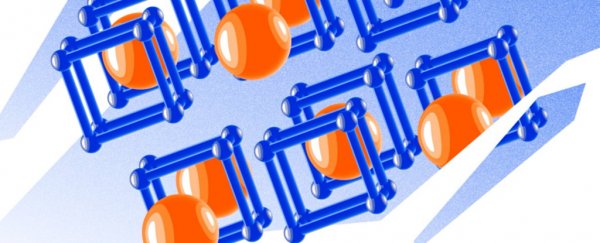Scientists have experimentally confirmed the existence of strange new uranium compounds - and they predict some could even achieve superconductivity close to room temperature.
Superconducting materials are able to shuttle electricity without any resistance - an incredible feat that could revolutionise our energy use.
But so far researchers have only found superconductivity in a handful of materials at either incredibly cold temperatures, or under extreme pressure.
The current record holder is a rare hydrogen sulphur compound that achieved superconductivity at a balmy 203 Kelvin (-70 degrees Celsius or -94 Fahrenheit).
And now the team thinks these new uranium compounds could do something similar… if not better, because they might not require such high pressures.
These new compounds are what's known as uranium hydrides - a mix of uranium and hydrogen.
Until recently, the only example of this species of molecule was uranium trihydride (UH3) which once played a vital role in nuclear experiments in the 1940s.
Now we can add a few more to the list, including UH5, UH6, UH7, UH8, UH9, U2H13 and U2H17.
To create them, a team of researchers from the US, Russia, and China applied pressure of up to 5 million atmospheres to a mixture of uranium and hydrogen, whipping up a generous assortment of uranium hydrides that have never been seen before.
Slowly stepping up the pressure, the researchers successfully created a total of 14 new uranium hydride compounds, some in multiple phases.
Their creation is more than academic. Chunky metal hydrides like these could potentially unlock the secrets of high temperature superconductivity.
"The two highlights of our results are that high pressure produces an amazingly rich collection of hydrides, most of which do not fit into classical chemistry," says fellow MIPT researcher Artem Oganov.
"And that these hydrides can actually be obtained and become superconducting at very low pressures, perhaps even at atmospheric pressure."
So what's the big deal about superconductivity? We've known for more than a century that electricity can flow through some materials without losing precious energy along the way.
Turning this into technology would be a big win for electronics, but it comes with a catch; those materials need to be cold. Very cold. Like a few degrees above absolute zero kind of cold.
There is a glimmer of hope. In the 1980s, scientists found signs that certain ceramic materials can achieve the same results at temperatures that don't require the world's most expensive freezers.
Four years ago, scientists from the Max Planck Institute for Chemistry in Germany went even better, with the discovery that sulphur hydride (H3S) could superconduct at 203 Kelvin.
If you're wondering why we're not all typing away on liquid nitrogen desktops running at 100 percent efficiency, it came with a depressing caveat of its own – it demanded pressures of around 1.5 million atmospheres.
Still, hydrides have since become sexy new materials for those chasing the superconductor grail.
"After H3S was discovered, scientists started eagerly searching for superconducting hydrides in other non-metals," says Ivan Kruglov from the Moscow Institute of Physics and Technology (MIPT).
As promising as non-metal hydrides are, there's good reason to think metal hydrides shouldn't be overlooked. Earlier this year, physicists from MIPT and Skoltech in Russia applied an algorithm to the actinide series of elements to determine which of those might form stable hydrides.
The team has since turned their attention to uranium, suspecting hydrides made of this chunky element could also become superconductors without the need for enormous pressure.
While the idea looked good on paper, this is the first time they've been able to show the compounds can actually exist, and behaved as predicted.
Importantly, they showed signs of superconducting under much lower pressures than other compounds.
"Our study showed that metal hydrides hold as much potential as non-metals in terms of high-temperature superconductivity," says Kruglov.
To be clear, this doesn't mean we've cracked the secret to superconductivity. Not by a long shot.
The warmest any of these new hydrides can transfer a current without resistance is still a prohibitively low –219 degrees Celsius (-362 Fahrenheit).
The team thinks they can push up the temperature by doping the material with other additives, and potentially bring down the pressure even further to something far more reasonable.
But the real end goal is to develop a better understanding how different materials manage the mind-boggling feat of effort-free conductivity in order to construct the ideal superconductor.
It's slow going deciphering superconductor's secrets. But the end result will be worth it.
This research is published in Science Advances.
